July 10, 2025
Robotic surgery emerged in the 1980s as a way to provide emergency medical treatment to astronauts. Today, it’s on the cusp of a major revolution, as AI integration and modular architectures enable faster patient recovery and reduced surgical trauma worldwide.
When engineers first explored robotic telesurgery in the 1980s, they weren’t imagining hospital operating rooms — they were thinking about astronauts hurtling through space. Decades later, that same vision now helps patients on Earth recover faster from complex surgeries, guided by robotic arms and AI-assisted navigation.
IEEE Senior Member Bhushan Jayeshkumar Patel has worked in the surgical robotics industry for a decade, and he sees this origin story not only as a fun fact, but as a reminder of the problem-solving mindset that continues to drive innovation in the field.
“What started as a necessity for remote care in hostile or inaccessible environments now enables greater surgical precision, reduced trauma and faster recovery for patients across the globe,” Patel said.
Here, he discusses new frontiers in surgical innovation and how the incorporation of AI and machine vision is transforming this sector.
What are some of the most common procedures currently being performed with the help of surgical robots, and are there newer, perhaps less common, procedures where they are starting to show significant promise?
Robotic-assisted radical prostatectomy was also one of the earliest and most widely adopted applications, due to the precision required in nerve-sparing around the prostate. It continues to be one of the most common robotic surgery procedures. Thoracic and cardiac procedures like mitral valve repair and lung repair are growing areas where robotic platforms offer minimally invasive access and enhanced visualization.
There are several emerging areas of promise in which surgical robots can demonstrate transformative potential. In robotic assisted spinal surgery, for example, emerging platforms can now offer extreme precision and screw placement, reducing complications and improving implant accuracy. We’re also seeing the emergence of new capabilities that allow surgeons to repair extremely tiny lymphatic blood vessels that would be a challenge for even the most skilled human hands.
Looking ahead, we are also seeing robotic surgery platforms being tailored for pediatric surgery, where smaller instruments and even gentler tissue handling are essential, and in bariatrics, where patient obesity presents ergonomic and visualization challenges.
From your perspective, what have been the one or two most significant advancements in surgical robotics recently, perhaps in terms of new capabilities, wider adoption or regulatory approvals?
Two major advancements stand out in the past few years: the shift toward open, modular architectures and the regulatory momentum enabling faster global adoption.
Historically, surgical robotics platforms were monolithic, tightly coupled hardware-software systems where surgeons had to adapt their workflow to the robot. Today, we are witnessing a shift. The newer systems are being designed with modularity in mind, allowing greater flexibility and customization for procedural needs.
Another underappreciated but critical advancement is how regulatory frameworks, especially at the FDA and in international markets, have evolved to keep pace with robotic innovation. We’ve seen several major approvals that reflect a growing confidence in robotic platforms’ safety and efficacy.
How is AI being used in surgical robotics today?
One of the most mature uses of AI in surgical robotics is real-time image analysis that leverages AI-powered computer vision to help differentiate anatomical structures, identify landmarks and even anticipate dissection planes, all in real time.
Another powerful application is in the post-operative review and training cycle. AI is being used to analyze thousands of hours of surgical video to benchmark surgical technique, provide automated performance scoring and identify inefficiencies or risk-prone patterns.
While fully autonomous surgery remains a longer-term goal, today’s systems incorporate AI to support semi-autonomous tasks such as camera repositioning, suture guidance or dynamic trajectory adjustment in response to tissue feedback.
What is the current level of autonomy, and how far are we from robots performing more complex tasks independently?
Right now, the robot can provide visual enhancements, movement scaling, tremor filtration and haptic constraints. That’s known as “level one” autonomy. Under level two autonomy, the robot autonomously performs specific subtasks, like cutting a bone in orthopedic surgery, under surgeon supervision. The next frontier is context-aware autonomy, where robots that understand not just motion, but also the intent of the surgeon..
Some barriers to full autonomy exist, particularly the variability of human anatomy. The FDA also requires a human in the loop for critical decision-making. There are also pretty big legal questions. Who is liable when a fully autonomous system makes a mistake?
Looking ahead, what innovations in surgical robotics are you most excited about?
We’re on the cusp of a paradigm shift that will reimagine what robotic surgery can be.
First, true surgical intelligence will emerge. For instance, we’ll see a system that can not only interpret complex anatomy but also anticipate complications before they arise, continuously learn from global data streams and adapt its guidance in the operating room.
We’ll also see huge improvements in visualization that might combine high definition 3D optics with augmented reality and hyperspectral imaging. These will allow surgeons to “see” tumors, vascular networks and critical structures in unprecedented detail.
Sensor technologies and haptics will restore and enhance the surgeon’s sense of touch at a robotic interface. This intimate feedback loop will enable surgeons to perform complex maneuvers with confidence and finesse that rival open surgery, but through tinier incisions.
Last, materials science breakthroughs will enable smaller, smarter and more adaptable robotic instruments, like soft robotics, which are constructed from flexible, biocompatible materials that can safely navigate challenging anatomical pathways. It will be coupled with advances in miniaturization.
Learn More: Did you know there’s a global standard guiding how surgical robots are built? IEEE standard 3177-2024 transforms how we think about safety, AI and modular design in the operation room. By defining secure, modular and interoperable systems, this standard helps ensure that innovation doesn’t come at the cost of safety. In a world where technology volves fast, standards help us move forward with confidence.
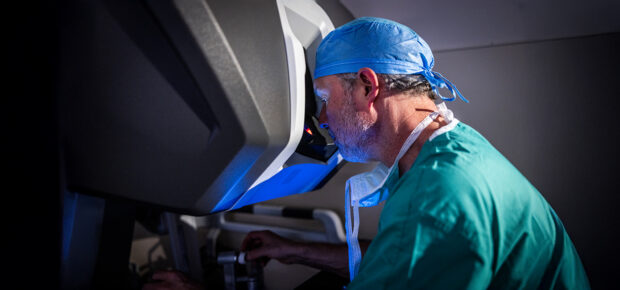


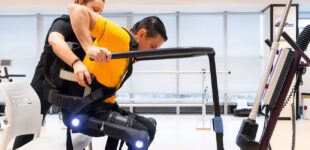


 Meaningful Momentum or Running in Place?
Meaningful Momentum or Running in Place? AI Through Our Ages
AI Through Our Ages Liquid Infrastructure: Our Planet's Most Precious Resource
Liquid Infrastructure: Our Planet's Most Precious Resource The Impact of Technology in 2025
The Impact of Technology in 2025 Quantum and AI: Safeguards or Threats to Cybersecurity?
Quantum and AI: Safeguards or Threats to Cybersecurity? Why AI Can't Live Without Us
Why AI Can't Live Without Us Bits, Bytes, Buildings and Bridges: Digital-Driven Infrastructure
Bits, Bytes, Buildings and Bridges: Digital-Driven Infrastructure Impact of Technology in 2024
Impact of Technology in 2024 Emerging AI Cybersecurity Challenges and Solutions
Emerging AI Cybersecurity Challenges and Solutions The Skies are Unlimited
The Skies are Unlimited Smart Cities 2030: How Tech is Reshaping Urbanscapes
Smart Cities 2030: How Tech is Reshaping Urbanscapes Impact of Technology 2023
Impact of Technology 2023 Cybersecurity for Life-Changing Innovations
Cybersecurity for Life-Changing Innovations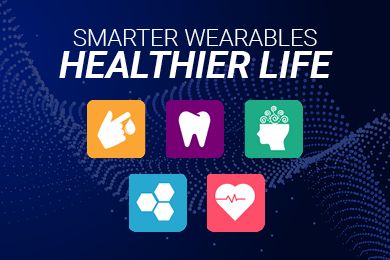 Smarter Wearables Healthier Life
Smarter Wearables Healthier Life Infrastructure In Motion
Infrastructure In Motion The Impact of Tech in 2022 and Beyond
The Impact of Tech in 2022 and Beyond Cybersecurity, Technology and Protecting Our World
Cybersecurity, Technology and Protecting Our World How Technology Helps us Understand Our Health and Wellness
How Technology Helps us Understand Our Health and Wellness The Resilience of Humanity
The Resilience of Humanity Harnessing and Sustaining our Natural Resources
Harnessing and Sustaining our Natural Resources Creating Healthy Spaces Through Technology
Creating Healthy Spaces Through Technology Exceptional Infrastructure Challenges, Technology and Humanity
Exceptional Infrastructure Challenges, Technology and Humanity The Global Impact of IEEE's 802 Standards
The Global Impact of IEEE's 802 Standards Scenes of our Cyber Lives: The Security Threats and Technology Solutions Protecting Us
Scenes of our Cyber Lives: The Security Threats and Technology Solutions Protecting Us How Millennial Parents are Embracing Health and Wellness Technologies for Their Generation Alpha Kids
How Millennial Parents are Embracing Health and Wellness Technologies for Their Generation Alpha Kids Space Exploration, Technology and Our Lives
Space Exploration, Technology and Our Lives Global Innovation and the Environment
Global Innovation and the Environment How Technology, Privacy and Security are Changing Each Other (And Us)
How Technology, Privacy and Security are Changing Each Other (And Us) Find us in booth 31506, LVCC South Hall 3 and experience the Technology Moon Walk
Find us in booth 31506, LVCC South Hall 3 and experience the Technology Moon Walk Virtual and Mixed Reality
Virtual and Mixed Reality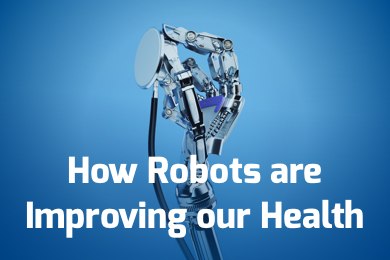 How Robots are Improving our Health
How Robots are Improving our Health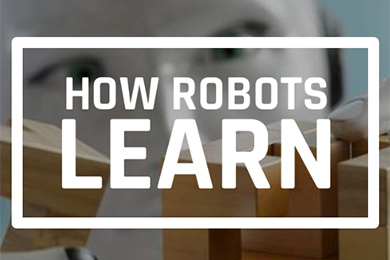 IEEE Experts and the Robots They are Teaching
IEEE Experts and the Robots They are Teaching See how millennial parents around the world see AI impacting the lives of their tech-infused offspring
See how millennial parents around the world see AI impacting the lives of their tech-infused offspring Take the journey from farm to table and learn how IoT will help us reach the rising demand for food production
Take the journey from farm to table and learn how IoT will help us reach the rising demand for food production Watch technical experts discuss the latest cyber threats
Watch technical experts discuss the latest cyber threats Explore how researchers, teachers, explorers, healthcare and medical professionals use immersive technologies
Explore how researchers, teachers, explorers, healthcare and medical professionals use immersive technologies Follow the timeline to see how Generation AI will be impacted by technology
Follow the timeline to see how Generation AI will be impacted by technology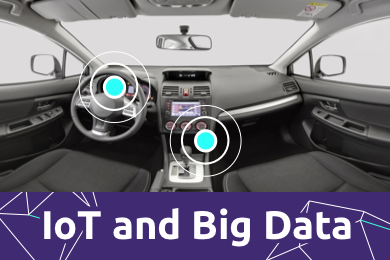 Learn how your IoT data can be used by experiencing a day in a connected life
Learn how your IoT data can be used by experiencing a day in a connected life Listen to technical experts discuss the biggest security threats today
Listen to technical experts discuss the biggest security threats today See how tech has influenced and evolved with the Games
See how tech has influenced and evolved with the Games Enter our virtual home to explore the IoT (Internet of Things) technologies
Enter our virtual home to explore the IoT (Internet of Things) technologies Explore an interactive map showcasing exciting innovations in robotics
Explore an interactive map showcasing exciting innovations in robotics Interactively explore A.I. in recent Hollywood movies
Interactively explore A.I. in recent Hollywood movies Get immersed in technologies that will improve patients' lives
Get immersed in technologies that will improve patients' lives